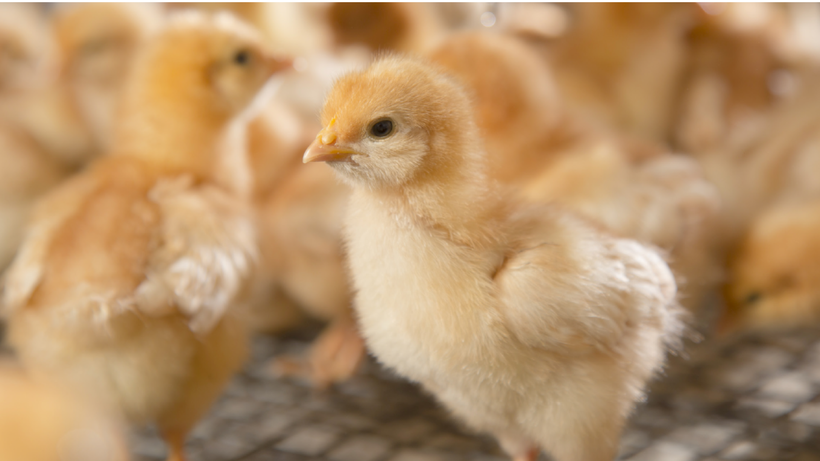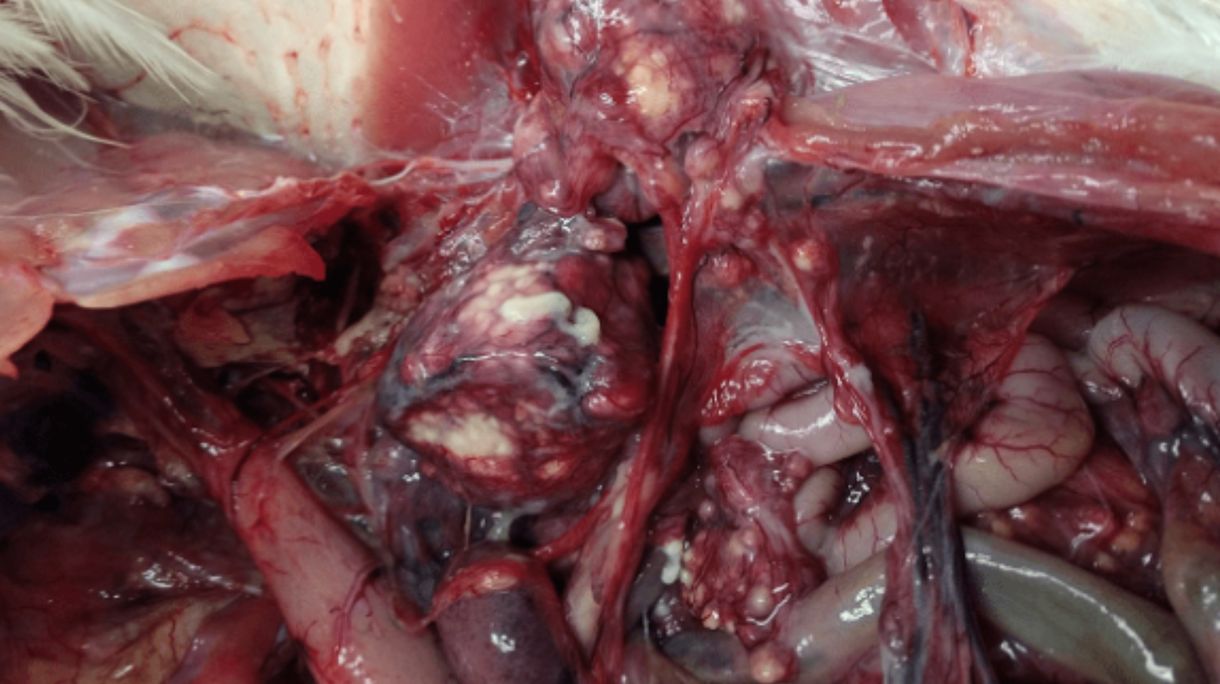
Published on Nov. 28, 2023
Aspergillosis (fungal disease)
Aspergillosis, a prevalent fungal disease, predominantly affects the respiratory systems of poultry such as chickens, turkeys, and occasionally other bird species like ducklings, pigeons, canaries, and geese. The disease leads to respiratory distress, stunted growth, and overall poor health in infected birds. In chickens and turkeys, it often recurs on certain farms, while in wild birds, it appears sporadically, impacting individual birds. The disease is most commonly found in young birds, up to 14 days of age: chicks face high mortality rates when exposed to a large number of spores during hatching or on contaminated bedding. Older birds are less susceptible, but inhalation of spore-laden dust from polluted litter, feed, or dusty areas also leads to infections.
Aspergillosis is mostly caused by Aspergillus fumigatus, a ubiquitous fungus, although other mold species can also be isolated from avian cases. There is no vertical transmission, but the spores attached to the shell of the eggs from the breeder farms can contaminate the hatchery environment: temperature and humidity conditions are ideal for their propagation in ventilation ducts. At farm level, contaminated litter or feed are the main sources of infection, but inadequate sanitation and ventilation problems exacerbate fungal growth and increase the risk of airborne spore invasion. The disease primarily affects the lower respiratory system and manifests differently depending on the bird’s immune status. Acute cases lead to significant morbidity and mortality in young birds, while chronic forms, associated with immunosuppression due to poor husbandry practices, affect older birds. Treatment for aspergillosis is generally ineffective, making prevention through proper hygiene and ventilation crucial.
Clinical signs
Lorem Aspergillosis manifests diverse clinical signs predominantly related to the respiratory system, leading to significant morbidity and mortality in birds. The disease occurs in two forms: acute, affecting young birds with symptoms like dyspnea (gasping and rapid breathing), anorexia, cyanosis, and sudden death, and chronic, prevalent in older birds, displaying signs such as inappetence, emaciation, dyspnea, and nervous system involvement like paralysis and tremors. Neurological symptoms like torticollis might also occur.
Gross lesions are primarily found in the lungs, air sacs, and sometimes in other organs (liver, intestines, brain) characterized by white to yellow granulomas, necrotic areas, and cheesy caseous plaques, occasionally with fungal sporulation. Ocular changes, such as mycotic keratitis with plaques can also be observed. Histopathological examination reveals granulomatous pneumonia with fungal hyphae.

Diagnosis
Diagnosis is mostly based on the clinical signs and gross lesions. For confirmation, the presence of Aspergillus can be identified microscopically in tissue samples of affected organs using special fungus stains: granulomas and hyphae will be revealed. Identification of the particular Aspergillus species is based on culturing samples on specific medium like Sabouraud Dextrose agar and distinguishing conidial heads and colony properties.
Treatment and control
Managing aspergillosis in birds revolves around prevention and careful environmental control since there is no definitive cure or effective treatment. Control measures at farm level include improving ventilation, eliminating infection sources (using mold-free litter, bedding material for nest boxes and feed), avoiding wet litter, adding fungistatics to the feed and following strict cleaning and disinfection procedures. Prevention strategies at hatchery level involve maintaining clean hatchery conditions, incubating only clean eggs with intact eggshells and disinfecting setters and hatchers: regular cleaning and disinfection of hatching equipment and especially air ducts is crucial. Thorough cleaning and fumigation of contaminated areas in the hatcheries with formaldehyde or enilconazole should be implemented to eliminate Aspergillus spores.
References
- Dr. Jacquie Jacob. (2023). ASPERGILLOSIS IN POULTRY. Small and Backyard Poultry. https://poultry.extension.org/articles/poultry-health/common-poultry-diseases/aspergillosis-in-poultry/
- Girma, G., Abebaw, M., Zemene, M., & Mamuye, Y. (2016). A Review on Aspergillosis in Poultry. Journal of Veterinary Science & Technology, 07(06). https://doi.org/10.4172/2157-7579.1000382
- Kannoju, Dr. A., Veldi, Dr. P., & Kumar, Dr. V. (2021). An overview of aspergillosis in poultry: A review. Journal of Entomology and Zoology Studies, 9(1), 685–688. https://doi.org/10.22271/j.ento.2021.v9.i1j.8647
- Michelle Kromm. (2022). Aspergillosis in Poultry. MSD Manual Veterinarian Manual. https://www.msdvetmanual.com/poultry/aspergillosis/aspergillosis-in-
